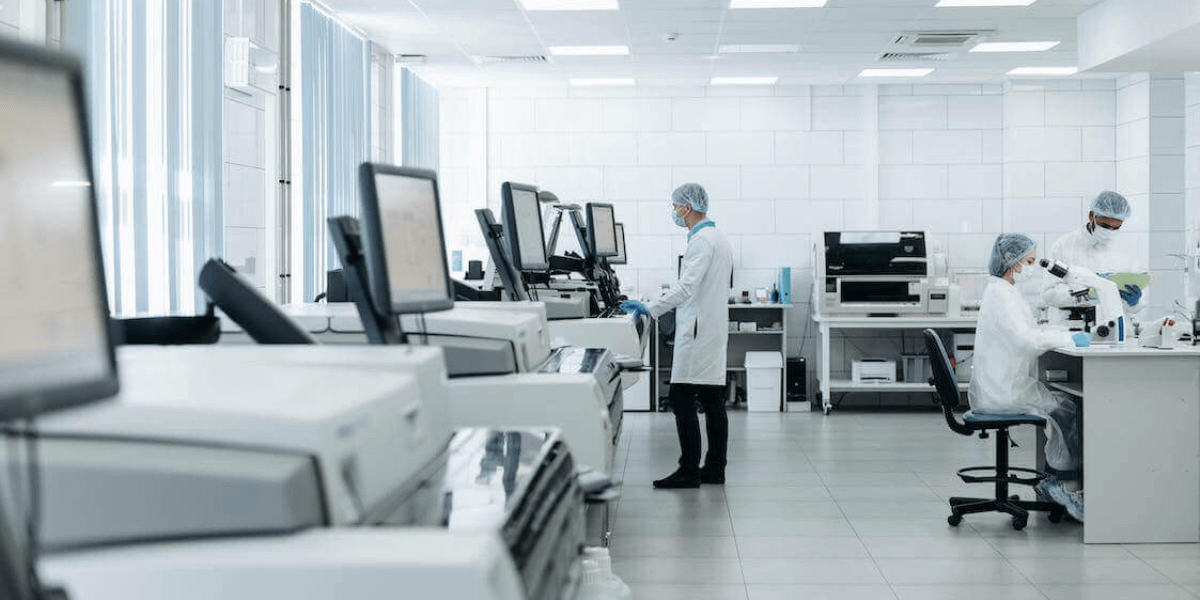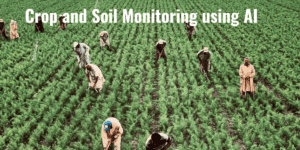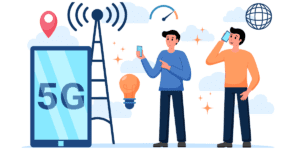Agriculture is one of the most significant and ancient practices of human civilization. It is an essential source of food and income for millions of people worldwide. In recent years, the advancement of technology has revolutionized agriculture, making it more efficient and productive. One such innovation is the Crop Health Monitoring System, which uses various technologies to monitor the health and growth of crops. This system has the potential to revolutionize agriculture and increase food production, leading to food security.
Crop Health Monitoring System:
Crop health monitoring systems are tools that use various technologies such as remote sensing, Internet of Things (IoT), and machine learning to monitor the health and growth of crops. These systems help farmers to identify problems early on and take necessary action to prevent crop losses. The system uses various sensors and cameras to gather information about the crop’s health and growth, which is then analyzed by the software to identify any issues. The data collected by the system is then used to create maps and reports that help farmers make informed decisions about their crops.
Components of a Crop Health Monitoring System:
Sensors: Sensors are an essential component of a crop health monitoring system. They are used to gather data about the crop’s health and growth. The sensors can be either ground-based or airborne. Ground-based sensors are placed in the field to measure soil moisture, temperature, and other environmental factors. Airborne sensors, such as drones, can capture aerial images and provide information about the crop’s health and growth.
Cameras: Cameras are used to capture images of the crops. They can be either ground-based or airborne. Ground-based cameras are placed in the field to capture images of the crops. Airborne cameras, such as drones, can capture aerial images of the crops.
Internet of Things (IoT): IoT is a network of devices that are connected to the internet. In a crop health monitoring system, IoT devices are used to collect data from sensors and cameras. The data is then sent to the cloud for analysis.
Cloud Computing: Cloud computing is used to store and analyze the data collected by the crop health monitoring system. The cloud-based software uses machine learning algorithms to analyze the data and provide insights into the crop’s health and growth.
Machine Learning: Machine learning is a type of artificial intelligence that allows software to learn from data. In a crop health monitoring system, machine learning algorithms are used to analyze the data collected by sensors and cameras. The algorithms can identify patterns in the data and provide insights into the crop’s health and growth.
Examples of Crop Health Monitoring Systems:
Sentera: Sentera is a company that provides crop health monitoring solutions. They use drones equipped with multispectral cameras to capture images of the crops. The images are then analyzed by machine learning algorithms to identify any issues with the crops. Sentera provides farmers with reports that include maps and recommendations for addressing any issues.
AgriTask: AgriTask is a company that provides an end-to-end agriculture management platform. The platform includes a crop health monitoring system that uses sensors and cameras to collect data about the crops. The data is then analyzed by machine learning algorithms to identify any issues. AgriTask provides farmers with recommendations for addressing any issues.
Arable: Arable is a company that provides a crop health monitoring system that uses sensors to collect data about the crops. The data is then analyzed by machine learning algorithms to identify any issues. Arable provides farmers with reports that include maps and recommendations for addressing any issues.
Phytech: Phytech is a company that provides a crop health monitoring system that uses sensors to collect data about the crops. The data is then analyzed by machine learning algorithms to identify any issues. Phytech provides farmers with recommendations for addressing any issues.
Benefits of Crop Health
1. Early Detection of Problems: Crop health monitoring systems can detect problems in crops at an early stage, allowing farmers to take prompt action to prevent further damage. This can help to reduce crop losses and improve yield.
2. Precision Agriculture: Crop health monitoring systems enable precision agriculture, where farmers can apply fertilizers, water, and other inputs only where and when they are needed. This can help to reduce the use of inputs, save money, and improve environmental sustainability.
3. Improved Efficiency: Crop health monitoring systems can improve the efficiency of farm operations by automating data collection and analysis. This can save time and reduce labor costs.
4. Data-Driven Decisions: Crop health monitoring systems provide farmers with accurate and timely data about their crops, allowing them to make informed decisions about inputs, harvesting, and marketing.
5. Environmental Sustainability: Crop health monitoring systems can help farmers to reduce the use of inputs such as fertilizers and pesticides, which can improve environmental sustainability and reduce the risk of pollution.
6. Increased Food Security: Crop health monitoring systems can increase food security by improving crop yield and reducing crop losses due to pests, diseases, and other issues.
7. Cost Savings: Crop health monitoring systems can help farmers to save money by reducing the use of inputs, improving efficiency, and reducing crop losses.
Conclusion:
Crop health monitoring systems have the potential to revolutionize agriculture by improving crop yield, reducing input use, and improving environmental sustainability. These systems use various technologies such as sensors, cameras, IoT, cloud computing, and machine learning to monitor the health and growth of crops. Crop health monitoring systems provide farmers with accurate and timely data about their crops, allowing them to make informed decisions and take prompt action to prevent crop losses. Overall, crop health monitoring systems are a key innovation in agriculture that can help to increase food security, improve efficiency, and promote environmental sustainability.




